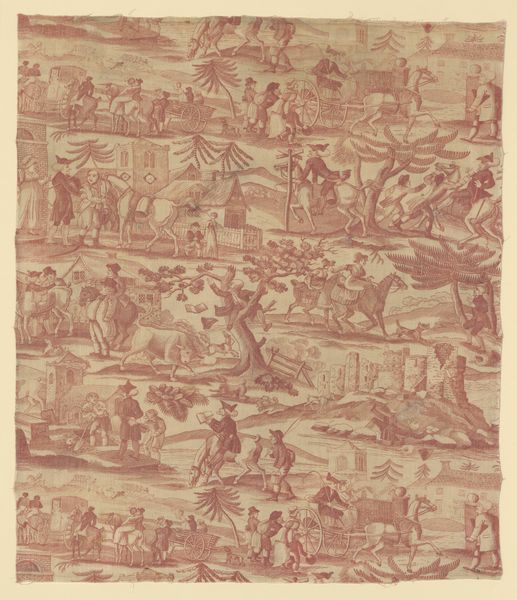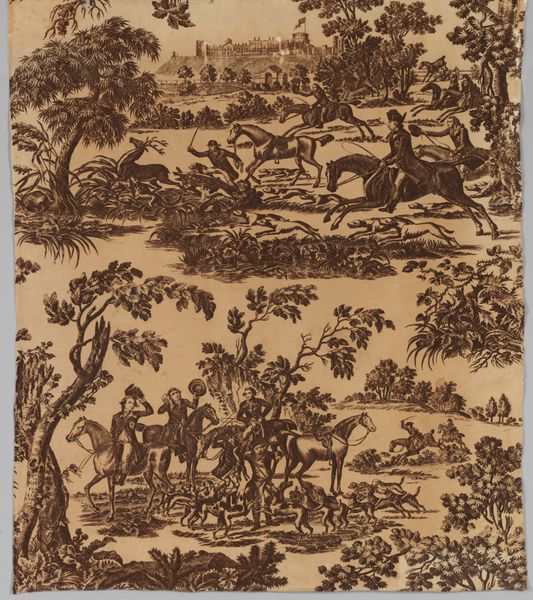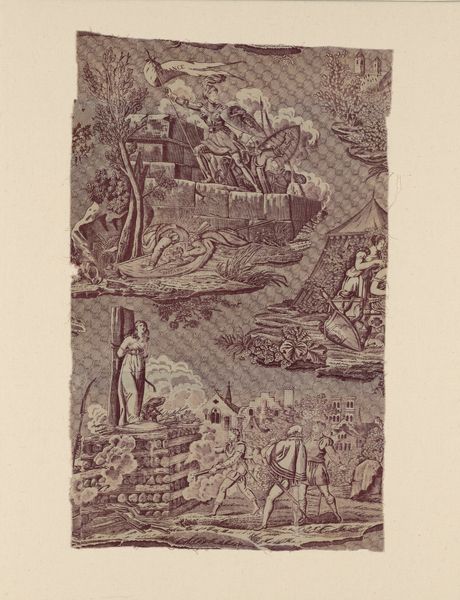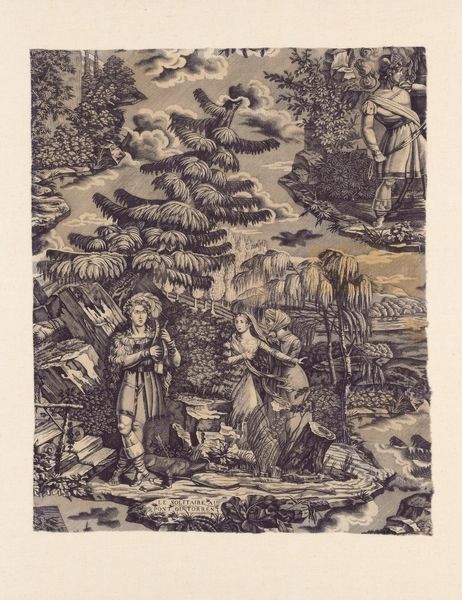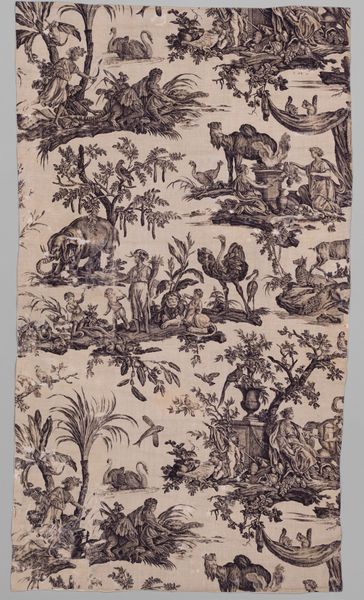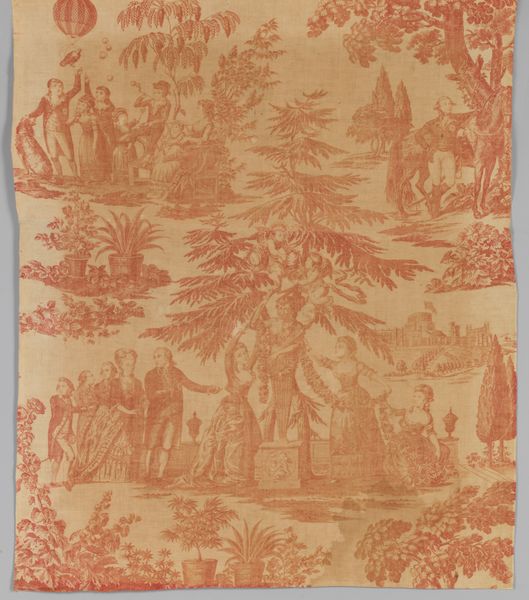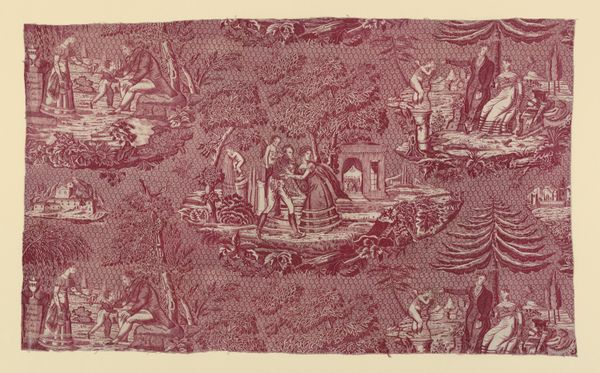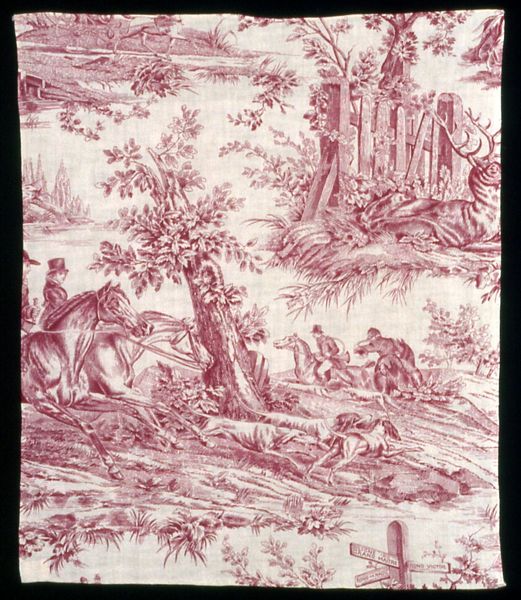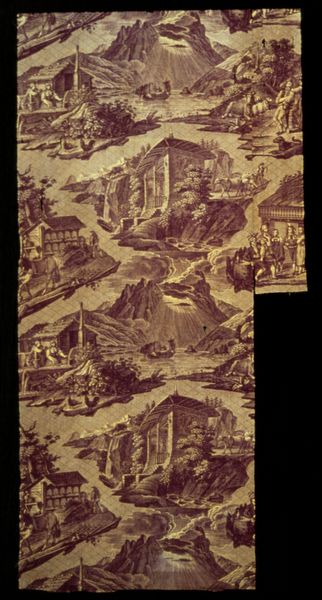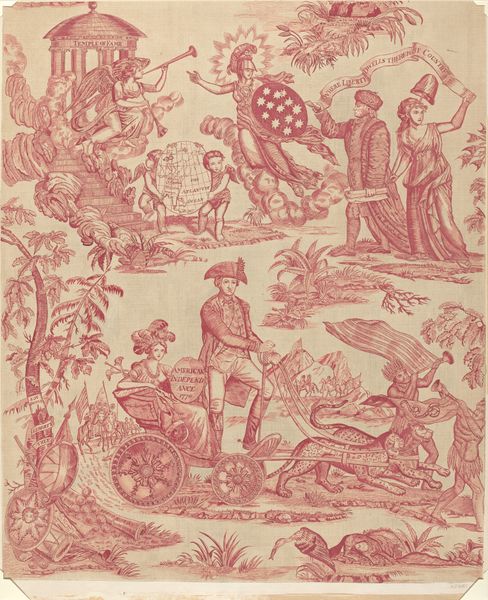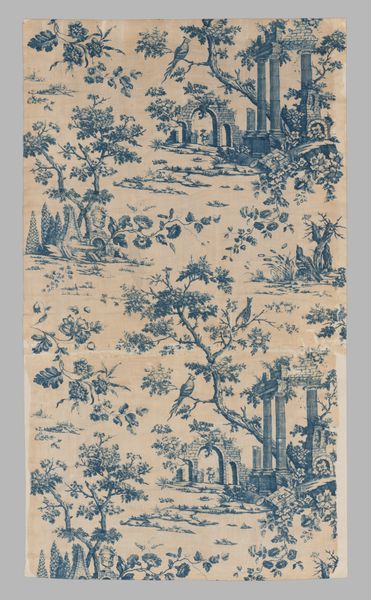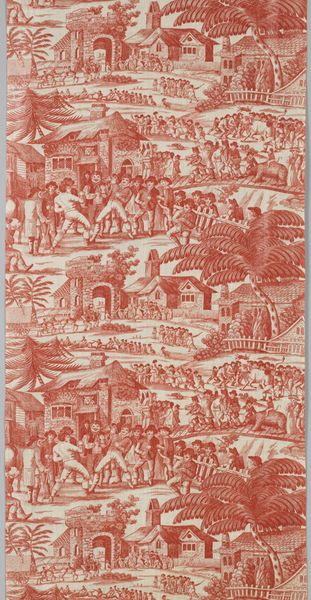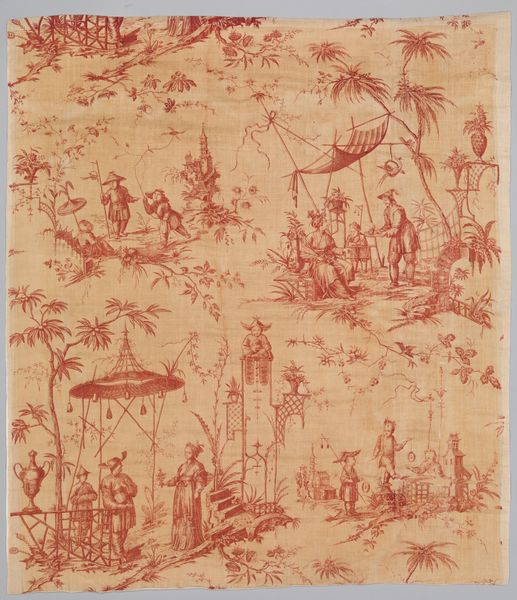
Traite des Nègres (The Slave Trade) 1800 - 1815
0:00
0:00
print, textile, engraving
#
narrative-art
# print
#
textile
#
text
#
organic pattern
#
romanticism
#
orientalism
#
islamic-art
#
history-painting
#
decorative-art
#
engraving
Dimensions: Overall: 101 × 33 in. (256.5 × 83.8 cm)
Copyright: Public Domain
Curator: This print, titled "Traite des Nègres," meaning "The Slave Trade," by Frédéric Etienne Joseph Feldtrappe, dating roughly from 1800 to 1815, presents a sobering historical tableau. Editor: The immediate effect is quite unsettling, isn't it? The repetitive scenes, almost decorative in their layout, are deeply disturbing considering their subject matter. It appears to be printed on textile, giving it an ironically domestic feel. Curator: Precisely. Feldtrappe's choice to depict this horrific trade as a repeating pattern transforms it into a consumable object, which prompts questions about the societal normalization of slavery in that period. The scenes document capture, enslavement, and transport. Editor: It makes me think about the material conditions of its creation. This isn't just an engraving; it's on fabric. Who produced this fabric? Was it meant for the elite who benefited from these trades? The choice of material is laden with social implications, really exposing the links between consumerism and this historical exploitation. Curator: That’s a key point. Prints like these circulated widely and played a role in shaping public opinion, sometimes subtly, sometimes overtly. The exoticized landscape, bordering on Orientalism, might have served to distance European consumers from the brutal realities depicted. It highlights how art and propaganda became closely intertwined. Editor: I find it haunting how something so beautifully crafted in its detail, likely involving considerable skill and labor to produce the engraving and print on textile, documents such inhumane conditions. There's a disjunction here, that highlights the process by which horrific industries, like the slave trade, were effectively glossed for public consumption. Curator: Ultimately, viewing “Traite des Nègres” demands we confront uncomfortable truths about power, representation, and the enduring legacy of colonialism. Editor: It forces you to consider the layers of production and consumption behind even seemingly innocuous decorative arts, showing just how enmeshed slavery was with broader social material production.
Comments
No comments
Be the first to comment and join the conversation on the ultimate creative platform.
